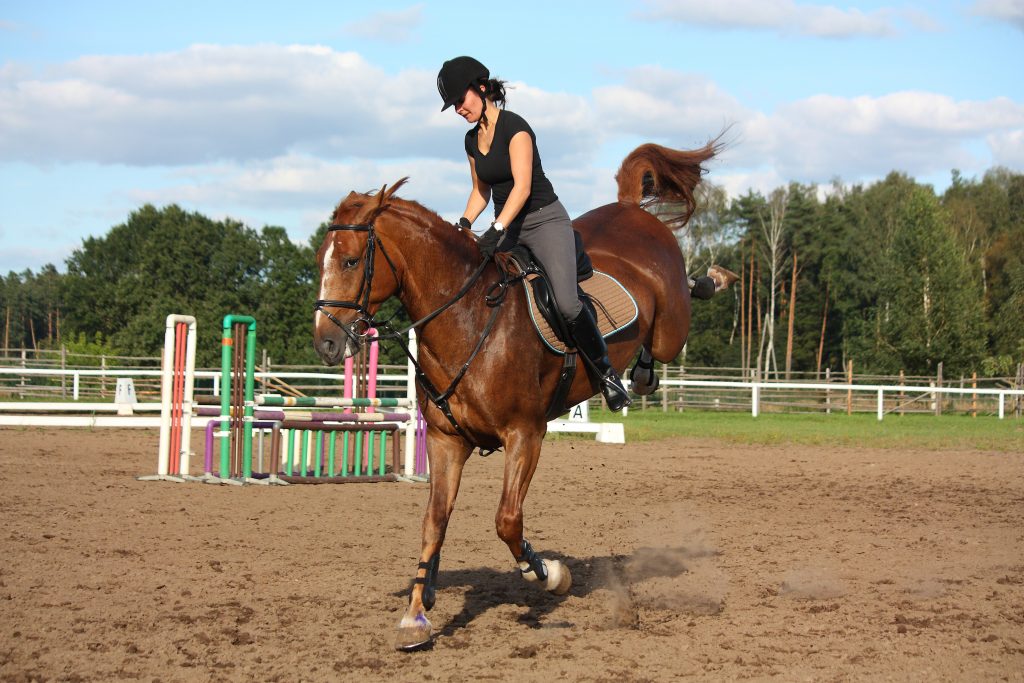Equine lameness is a disorder or abnormality in a horse’s gait, movement, or posture caused by pain, injury, or dysfunction in the musculoskeletal system. It is one of the most common health issues affecting horses and can range from mild discomfort to severe, disabling conditions that require immediate veterinary attention. Understanding the causes, diagnosis, and treatment of lameness is essential for horse owners and their vets to maintain equine health and performance.
What causes Equine Lameness?
Lameness can originate from various parts of the horse’s body, particularly the legs, hooves, joints, muscles, tendons, and ligaments. Common causes include:
- Injury: Trauma from accidents, overexertion, or repetitive stress (e.g., jumping, racing, or long-term riding) can lead to sprains, fractures, bruising, or tendon/ligament damage.
- Hoof Problems: Issues such as abscesses, laminitis, navicular syndrome, or poor hoof balance.
- Joint Issues: Arthritis or degenerative joint disease, inflammation, and conditions like osteochondrosis dissecans (OCD).
- Muscle and Tendon Strain: Tendinitis, muscle tears, or ligament strain due to poor conditioning or overuse.
- Conformational Defects: Horses with naturally poor conformation (improper limb alignment) are more prone to developing lameness over time due to uneven loading of weight on their joints and limbs.
What are the signs and symptoms?
The primary symptom of lameness is an abnormal gait, where the horse may appear to limp, favour one leg, or show stiffness or reluctance to move. Other signs include:
- Head Bobbing: The horse will raise its head when stepping on a sore front limb and lower it when the non-affected front limb hits the ground.
- Uneven Stride: One leg may take shorter or more hesitant steps than the other.
- Swelling and Heat: Inflammation in joints, tendons, or muscles often causes swelling and increased heat in the affected area.
- Reluctance to Bear Weight: Severe lameness may cause the horse to avoid putting weight on the affected limb entirely.
- Pelvic Dip: A dip or hip oscillation in a lame hind limb can be observed.
How do we diagnose lameness?
We diagnose lameness after a systematic examination, starting with a thorough physical evaluation. Some common diagnostic techniques include:
- Palpation: Feeling the limbs, joints, and muscles to identify pain, swelling, or heat.
- Flexion Tests: Manipulating the joints to detect stiffness or discomfort.
- Movement Evaluation: Watching the horse walk, trot, or canter to assess the gait and locate the source of the problem. Where possible, observation of the horse being ridden can be invaluable in milder lameness/performance investigations.
- Diagnostic Imaging: X-rays, ultrasound, bone scan/nuclear scintigraphy or MRI may be used to identify fractures, joint issues, or soft tissue injuries.
- Nerve Blocks: Local anaesthetics are used to numb specific areas to pinpoint the source of pain temporarily.
What are the treatment options?
The treatment of lameness depends on the underlying cause, severity, and duration of the condition. Common treatment methods include:
- Rest and Rehabilitation: Injuries to muscles, tendons, or ligaments often require a period of rest and controlled exercise to allow healing.
- Medication: Anti-inflammatory drugs, including intra-synovial medications (joint injections), pain relievers, and joint supplements, may be used to manage symptoms and reduce inflammation. ‘Regenerative’ therapies may also be indicated.
- Corrective Shoeing: Proper hoof care and corrective shoeing can alleviate issues related to hoof balance and structure, particularly in cases of laminitis or navicular disease.
- Surgery: In more severe cases, surgical intervention may be necessary, particularly for fractures, joint abnormalities, or advanced degenerative conditions.
- Physical Therapy: Rehabilitation exercises, laser therapy, and other modalities are sometimes used to improve mobility and strengthen affected areas.


What are the best ways of preventing lameness?
Preventing lameness involves regular care and attention to your horse’s overall well-being. Some key preventive measures include:
- Routine Farrier Care: Regular trimming and shoeing with a registered farrier will help maintain hoof health and balance.
- Conditioning and Exercise: Proper conditioning reduces the risk of muscle strain and overuse injuries.
- Diet and Nutrition: A well-balanced diet with appropriate joint supplements can help maintain the health of bones, joints, and connective tissues.
- Regular Veterinary Check-ups: Routine health assessments can detect early signs of lameness before they develop into more serious issues, particularly before and during the competition season.
Conclusion
Equine lameness is a complex condition with many possible causes, ranging from minor issues like hoof abscesses to serious problems such as fractures or joint diseases. Early detection and treatment are crucial to prevent long-term damage and ensure the horse’s health and performance. By focusing on proper care, training, and regular monitoring, horse owners can significantly reduce the risk of lameness and promote their horse’s well-being.

Call to ask any question
01420 551 365
Equine Services
Your Trusted Equine Partner
Expert veterinary care for horses in Surrey, Hampshire and the surrounding areas.


